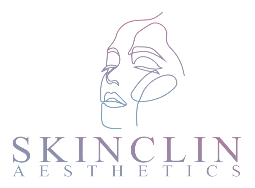How Accounting Standards Differ for Non-Profit vs For-Profit: Contributions and Grants Explained
With the right accounting software, you can simplify your financial processes, stay compliant, and create a strong financial foundation for your mission’s success. Finding the perfect software for your nonprofit’s finances is a game-changer—it makes managing money easier and gives you the tools to succeed. Failing to closely track expenses leads to overspending, cash flow issues, or potential disruptions to your nonprofit operations. What is nonprofit accounting? Therefore, insights into these account balances will be unavailable unless adequate records are maintained elsewhere. Your state fundraising registration renewal may seek some of these details as well, particularly details on fundraising events. This content is for general information purposes only, and should not be used as a substitute for consultation with professional advisors. Directors must ensure that the flow of information regarding grant accounting practices remains clear and accessible, fostering an environment of trust and accountability. However, adhering to GAAP is highly recommended and often expected in the nonprofit sector. Since the invoice for the expenses incurred is received in Year 1, expenses of $100,000 will be recorded in Year 1, thereby netting a surplus of $25,000 in Year 1. In our exploration of non-profit accounting in Canada, we highlighted crucial elements. We covered fund accounting basics, emphasizing net sales the significance of transparency and accountability. In general, effective financial management is vital for non-profit organizations in Canada to fulfill their mission and sustain their operations. In this section, we will discuss various aspects of financial management that are essential for maintaining the financial health of non-profits. Tax and GAAP Updates for Nonprofits GAAP rules for nonprofits are intended to create transparency for donors and grant-makers. They also help the government GAAP for Nonprofits monitor whether an organization should retain its tax-exempt status. Nonprofit fund accounting is a method of accounting that emphasizes accountability, rather than profitability. Consolidate Funds for Programs and Activities This statement is crucial for understanding the distribution of an organization’s expenses, providing insights into its overall financial management and effectiveness in using resources to accomplish its mission. Additionally, it outlines expenses by function – distinguishing between program, management, and fundraising expenses. This statement allows stakeholders to evaluate the organization’s ability to generate funds and use the revenue effectively to support its mission. While nonprofits typically record donated services or facilities and volunteer time according to GAAP, the IRS doesn’t include them as contributions or expenses. Many nonprofits make the mistake of making separate funds for each program activity, or grant received by your Accounting Security organization. Under these conditions, documentation will specify the restrictions of a grant award. In order to record the expenses that use funds from a grant, you’ll need to create an expense category specific for cash and cash equivalents. Donors can choose to designate their donation as either restricted or unrestricted donations. These statements are prepared in accordance with the Generally Accepted Accounting Principles (GAAP) and are governed by the Financial Accounting Standards Board (FASB). Before diving into the how-to of nonprofit accounting, it’s important first to understand what it’s all about. It is an accounting method used by nonprofit organizations, churches, and other charitable organizations to ensure the proper allocation of funds. With permanently restricted funds, the donation acts as principal on which interest can be earned and only the interest is to be spent. The goal of GAAP is to ensure that the financial statements for for-profit entities are consistent across industries, allowing investors and the government to interpret them more easily. For example, donors can specify their intention through an agreement with the nonprofit. The Charity CFO offers a team of experienced CFOs and accountants who specialize in helping nonprofits manage their finances. Our experts have extensive knowledge of GAAP and can help you ensure that your revenue recognition is accurate and compliant. Unrestricted funds are those that can be used for any purpose by the nonprofit organization, while restricted funds must be used for specific purposes as designated by the donor. Ideally, have a dedicated person or team to manage donation tracking, acknowledgments, and compliance. This will help ensure that your revenue recognition is accurate and you remain compliant with the IRS. Mortal fears about retirement: Americans need more time, money This is all information that the IRS and your state will likely want details concerning. Again with regard to the IRS, program accomplishment data and fundraiser details are required disclosures on Form 990 for nonprofits filing anything greater than a Form 990-N. Your state fundraising registration renewal may seek some of these details as well, particularly details on fundraising events. Overhead represents the indirect expenses that are necessary for running the organization but are not directly tied to any specific program or service. Nonprofits should strive to keep overhead costs manageable while maintaining the organization’s effectiveness. The revenues will be split evenly across the two years (since the workshops are held evenly across two years).
